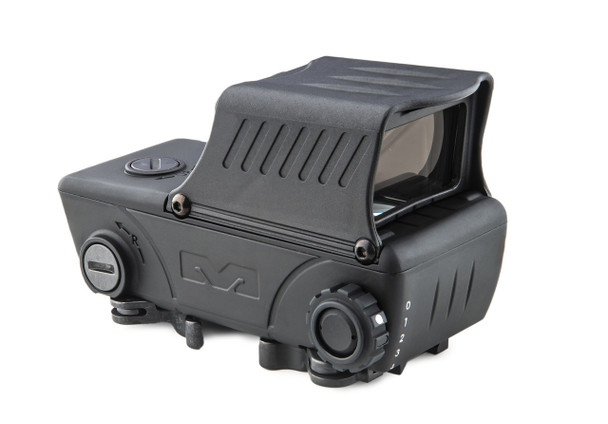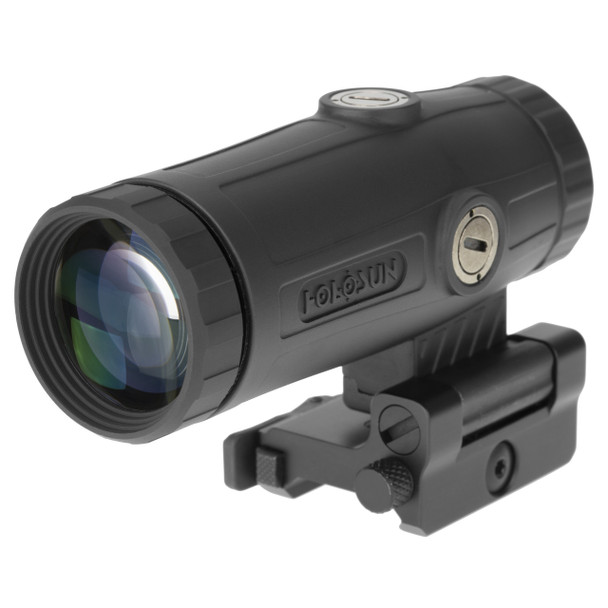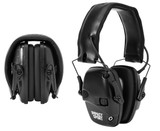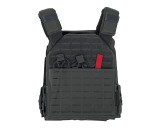Choosing the Right Optical Sight in 2024: A Comprehensive Guide
Introduction
Optical sights are critical tools for enhancing accuracy and target acquisition in various shooting scenarios, from hunting to competitive shooting to tactical operations. With advancements in technology, the selection of optical sights available in 2024 is vast and diverse. This detailed guide will help you understand the different types of optical sights, their features, and the nuances of choosing the right one for your specific needs.
Types of Optical Sights
Optical sights can be broadly categorized into three main types: Red Dot Sights, Holographic Sights, and Magnified Scopes. Each type has its unique characteristics and applications.
Types of Optical Sights
| Type | Description | Common Uses |
| Red Dot Sights | Non-magnifying reflectors, project a dot onto the lens | Close-quarters combat, hunting, sport shooting |
| Holographic Sights | Use laser to project reticle onto a holographic film inside the sight | Tactical shooting, law enforcement |
| Magnified Scopes | Provide magnification for precise aiming at longer distances | Hunting, long-range shooting, sniping |
Red Dot Sights
Red Dot Sights are popular for their simplicity and speed. They provide a clear aiming point without magnification, making them ideal for rapid target acquisition.
- Parallax-Free: Ensures that the dot remains on target regardless of eye position.
- Battery Life: Modern red dots have extended battery life, with some models offering solar backup.
- Reticle Options: Choices range from simple dots to more complex reticles with additional aiming points.
Key Features of Red Dot Sights
| Feature | Description | Benefit |
| Parallax-Free | Dot remains accurate regardless of eye position | Consistent accuracy |
| Battery Life | Extended operation time, some with solar backup | Reliable usage over long periods |
| Reticle Options | Various reticle designs for different shooting needs | Customizable for user preference |
Holographic Sights
Holographic Sights use laser technology to project a reticle onto a holographic film. They are known for their fast target acquisition and robustness.
- Field of View: Provides a wide field of view, making it easier to track moving targets.
- Reticle Precision: Offers precise aiming points even under magnification.
- Durability: Built to withstand harsh conditions, making them suitable for tactical environments.
Key Features of Holographic Sights
| Feature | Description | Benefit |
| Field of View | Wide viewing area | Enhanced situational awareness |
| Reticle Precision | Sharp and clear reticle, even with magnifiers | Accurate aiming at varying distances |
| Durability | Robust construction | Reliability in extreme conditions |
Magnified Scopes
Magnified Scopes offer various levels of magnification, providing enhanced precision for long-range shooting.
- Variable Magnification: Adjustable zoom levels allow for versatility across different shooting distances.
- Reticle Types: Can include bullet drop compensators, illuminated reticles, and range finders.
- Optical Quality: High-quality lenses ensure clear and bright images.
Key Features of Magnified Scopes
| Feature | Description | Benefit |
| Variable Magnification | Adjustable zoom levels | Versatility for different ranges |
| Reticle Types | Variety of reticle designs, including illuminated options | Enhanced aiming accuracy |
| Optical Quality | High-quality lenses | Clear and bright images |
Choosing the Right Optical Sight
When choosing the right optical sight, consider the following factors:
- Purpose: Determine the primary use of the sight. Hunting, tactical operations, competitive shooting, and home defense all have different requirements.
- Range: Consider the typical engagement distances. Close-range requires fast acquisition, while long-range shooting benefits from magnification.
- Environment: Assess the environmental conditions. Durability and weather resistance are crucial for outdoor and tactical use.
- Compatibility: Ensure the sight is compatible with your firearm and mounting system.
- Budget: High-end models offer advanced features but at a higher cost. Determine your budget and find the best option within it.
Factors to Consider When Choosing an Optical Sight
| Factor | Description | Considerations |
| Purpose | Primary use (hunting, tactical, sport shooting, etc.) | Match sight type to intended use |
| Range | Typical engagement distances | Select appropriate magnification |
| Environment | Environmental conditions (weather, terrain) | Choose durable, weather-resistant models |
| Compatibility | Firearm and mounting system compatibility | Ensure proper fit and functionality |
| Budget | Available budget | Balance features with cost |
Conclusion
Choosing the right optical sight in 2024 involves understanding the different types available and their specific applications. Red dot sights, holographic sights, and magnified scopes each offer unique benefits tailored to various shooting scenarios. By considering factors such as purpose, range, environment, compatibility, and budget, you can select the optical sight that best meets your needs. Investing in the right sight will enhance your shooting accuracy, efficiency, and overall experience.
Recent Posts
-
Understanding Ballistic Shield Ratings and Their Applications
The Trusted Name in Tactical Defense - BattleSteel® When it comes to protecting those who protect us …2025-04-19 -
The Importance of Hearing Protection in Tactical Environments
The Legacy of BattleSteel® BattleSteel® is a trusted name in the world of tactical defense equipment …2025-04-14 -
How to Properly Fit and Wear a Plate Carrier
About BattleSteel and Their Mission BattleSteel is a trusted name in the tactical gear industry, ren …2025-04-11





